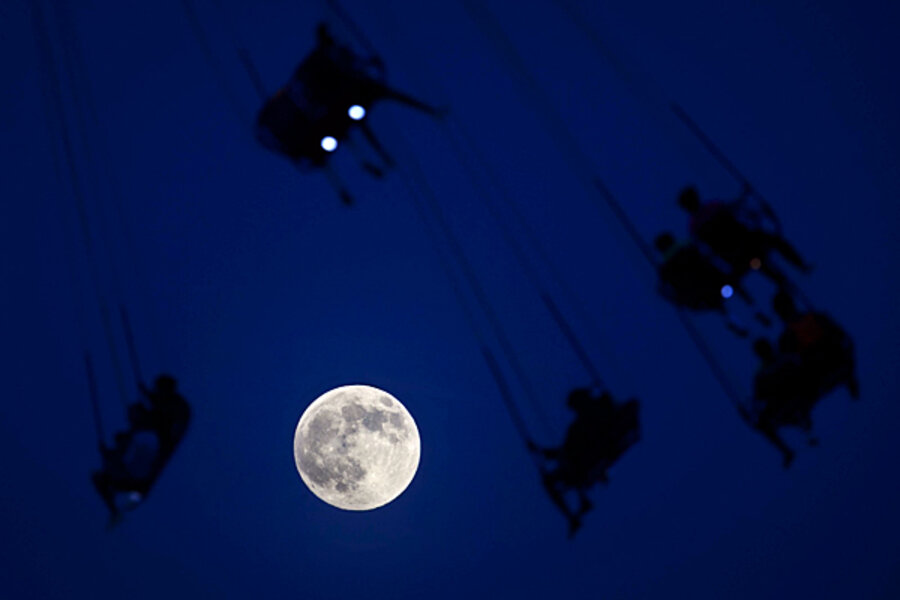A national park on the moon? Fire up the minivan!
Loading...
| Washington
Two US lawmakers have filed legislation that would establish a US national park on the moon.
No, we’re not making this up. Democratic Reps. Donna Edwards of Maryland and Eddie Bernice Johnson of Texas are proposing a moon-based Apollo Lunar Landing Sites National Historical Park.
“As commercial enterprises and foreign nations acquire the ability to land on the Moon it is necessary to protect the Apollo lunar landing sites for posterity,” reads H.R. 2617, otherwise known as the “Apollo Lunar Landing Legacy Act.”
Load up the minivan, kids! We’re skipping the Smoky Mountains this year. Go now – there aren’t many rest stops on the way.
Sorry. Getting back to reality, both lawmaker sponsors are members of the House Science, Space, and Technology Committee. They say that setting up a moon national park would preserve artifacts left on the moon’s surface and provide for “greater recognition and public understanding of this singular achievement in American history.”
They’re proposing that NASA work with the Department of the Interior and the National Park Service to manage access to, provide interpretation of, and help historically preserve all areas where astronauts and instruments connected with the 1969-72 Apollo space program touched the lunar surface.
The bill would also allow the US to accept private and international donations to help pay for this huge project, and it would require the Department of the Interior to apply to the United Nations Educational, Scientific, and Cultural Organization (UNESCO) for designation of the park as a World Heritage Site.
OK, we’ve got a few questions here.
DO WE OWN THE MOON? Don’t US national parks have to be, you know, on US territory? Last we looked the moon was not yet the 51st state, despite Newt Gingrich’s past efforts to make it so. (No, we’re not making that up either – then-Congressman Gingrich once filed a bill that would have allowed a moon base to apply for statehood.)
While the bill talks about moon landing sites, it appears to define the prospective park only in terms of artifacts left behind by astronauts, which presumably remain US property. Maybe it skirts the ownership issue via a technicality.
HOW WILL WE GET THERE? Talk about an Odyssey for your Honda – that’s a long way, the moon. Perhaps lawmakers will see this as a way to encourage a burgeoning commercial space tourism industry. It would be like the Dry Tortugas National Park, which is in the ocean 70 miles off Key West, Fla., and accessible only by private boat or charter. Only it would be 239,000 miles away, and accessible via private pressurized space vehicle.
WILL THERE BE SOUVENIRS? As any visitor to a national park knows – especially those with children – no trip is complete without a visit to the souvenir store. Many of these sell astronaut ice cream, so presumably that would be a big seller on the actual moon as well. Slogan T-shirts (“I swam in the Sea of Tranquility!”) are always hot. Maybe they’ll sell replicas of the number 6 iron Alan Shepard sneaked onto Apollo 14 to hit a few golf balls on the lunar surface.
“I’m gonna try a little sand trap shot here,” said Shepard at the time.
Come to think of it, a nine-hole moon golf course concession might pay for the whole park.








